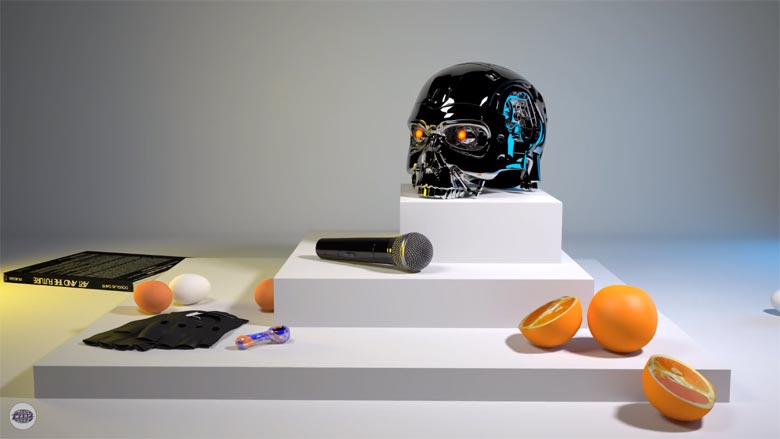
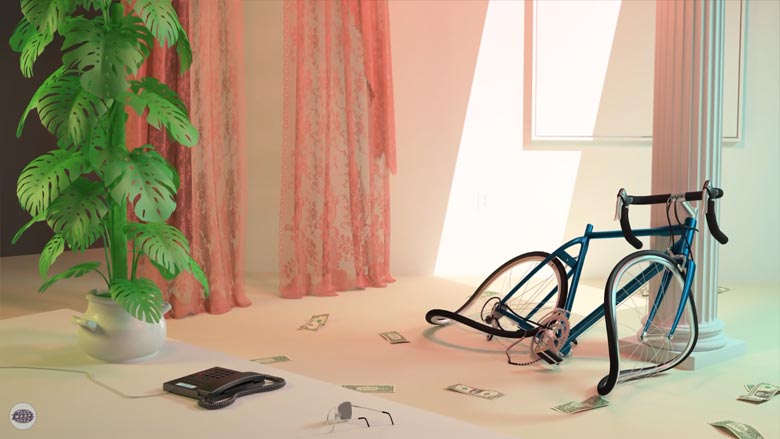
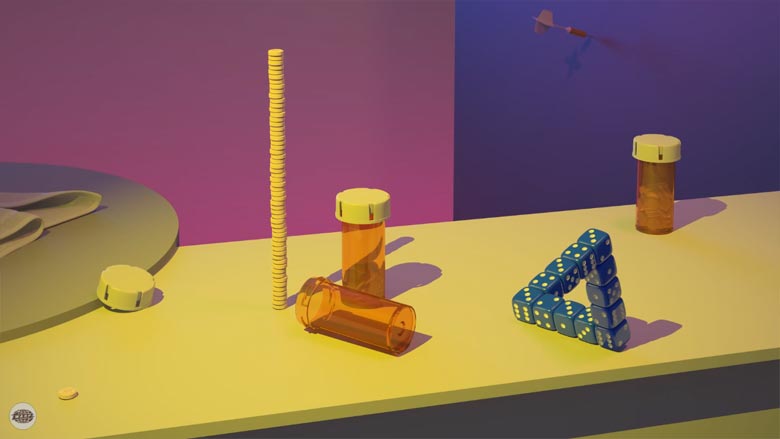
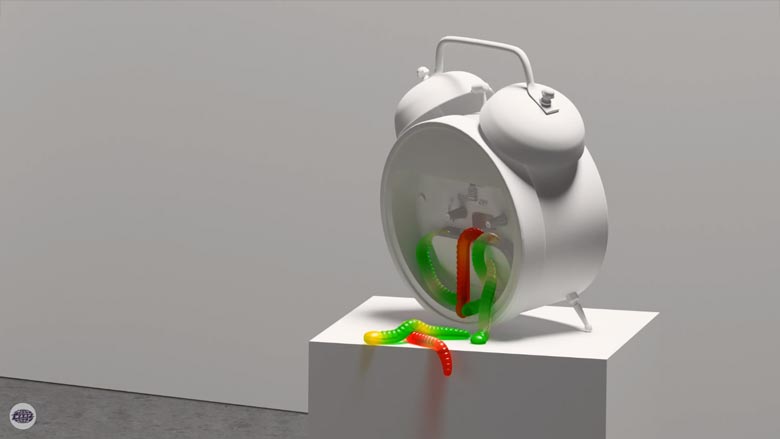
Oneohtrix Point Never – “Problem Areas” Music Video
In 2012, well-respected abstract data mosh artist Takeshi Murata cleaned up his style with a series of polished works entitled Synthesizers, which were concocted from a mixture of purchased stock objects and self-rendered 3-dimensional forms. Featuring soft lighting and charming coloration, the subjects in Murata’s series are objects one might find anywhere — the discarded and left behind, forgotten and unloved — made to look hyper-real and hyper-attractive.
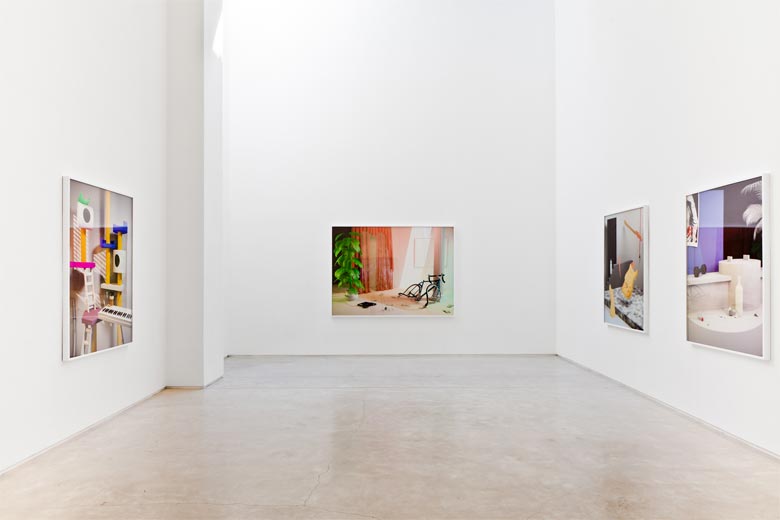
According to the press release for the Fall 2012 show at Salon 94 in NYC:
[Murata’s] images display the technological innovations that invade our 21st century lives: sports drinks, antidepressants, Apple products, brand- name snacks, and exercise equipment. The objects have either been immaculately sculpted through computer programs or purchased as ready-mades from 3D web malls. Without access to a Hollywood animation studio, Murata relies on a shared knowledge from the online community including YouTube tutorials. Using the Open Source model of production, Murata creates digital pictorial spaces hovering between waking life and the dream world, i.e. conceptual photography and surrealism. The product of Murata’s trademark DIY high tech vocabulary, these contemporary still lives conjure at once Pixar’s Toy Story, Salvador Dali’s The Persistence of Memory, and the online 3D game Phosphor Beta 2.By juxtaposing the high-end digital fidelity of Hollywood and video gaming industries with found underground methods, Murata’s “folk” versions appear as the leftovers of everyday life – the crumbs left behind. His process is an amateur’s personal immersion and examination of the “new normal” – a cinematic and brutal HD.
In Bullseye, a blue screen is the backdrop for a disparate collection of objects: stacked pills, empty pill bottles, blue dice and a failed game of darts. The product placement here points to the allure of hyper-reality, signaling how synthetic images invade our visual surroundings. Each work shows a “party” scene – but it is unclear what has been played out; a knocked over chessboard, scattered dollar bills, a half empty glass of wine. Elements of badminton, weights and darts hint to the leisure games we play and gamble (accentuating the origin and purpose of the graphics). And more, the objects point to the artist’s personal vocabulary – baby bottles, musical culture and 80s vintage movie posters.
Oneohtrix Point Never’s music video for “Problem Videos” is set to these images by Murata, and Murata’s approach to his works resonates in some ways with musician Daniel Lopatin’s philosophy behind the track:
Murata is also responsible for OneohtriPoint Never‘s current experimentally-rendered website, and Lopatin’s upcoming disc, R Plus Seven, comes out on September 30th/October 1st on Warp Records.
Jimmy Edgar – “Hot Inside”
For whatever reason, hand fetishism is all the rage in music these days (see: list of featured media below), and Jimmy Edgar’s music video for “Hot Inside”, animated by Ultramajic‘s Brez, certainly has aspects of that. Modeled hands become centerpieces when placed atop pedestals, as retro charm swirls all about in the form of sigils, hula hoop-type forms, and marble-lined rooms and hallways.
(Right) Jimmy Edgar – Hot Inside EP;
(Below) Slava – Soft Control EP;
(Also) Wax Fingers – Wax Fingers;
(Also) Zach Hill – “The Primitives Talk” Music Video

Also, get your dancing pants ready, because Jimmy Edgar and JETS (his project with Machinedrum) will be at the 2013 Decibel Festival. The Hot Inside EP is now out on Ultramajic.
Ω






